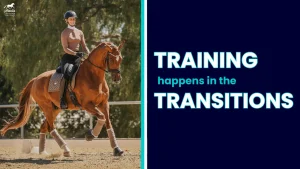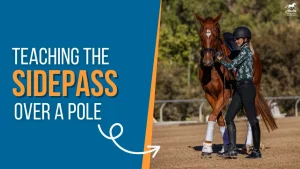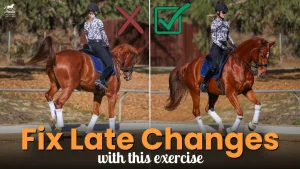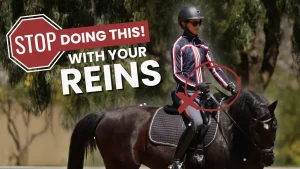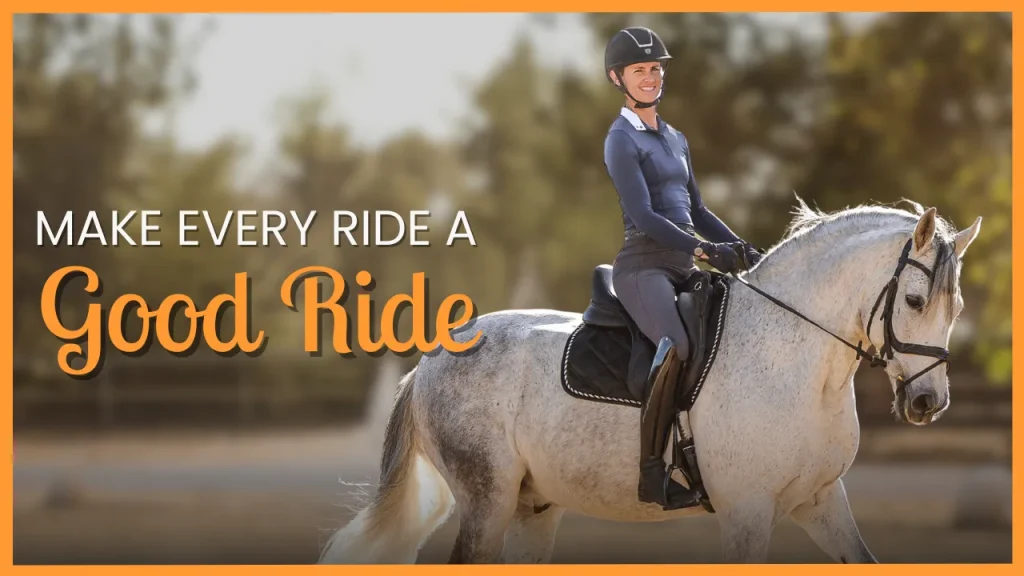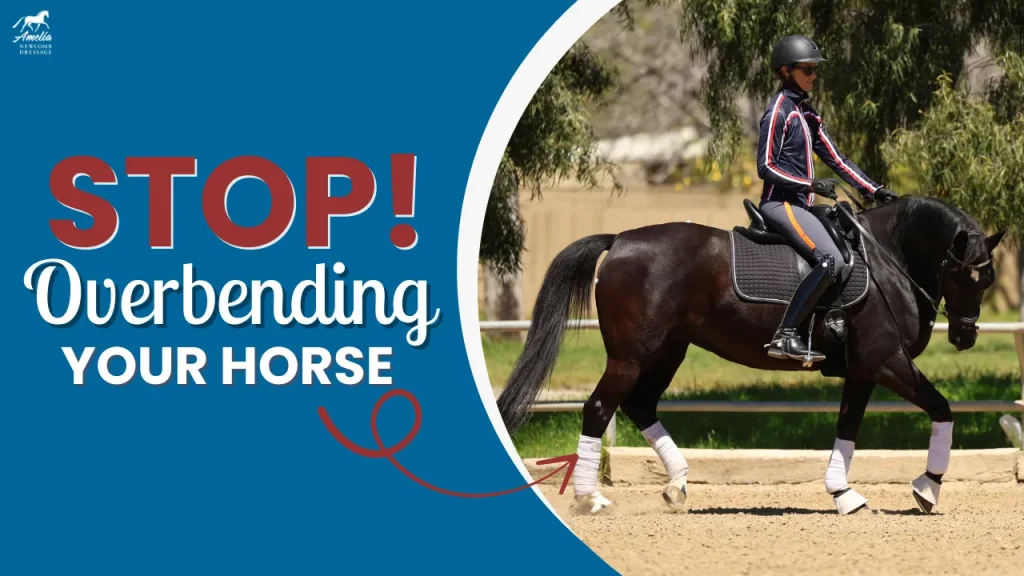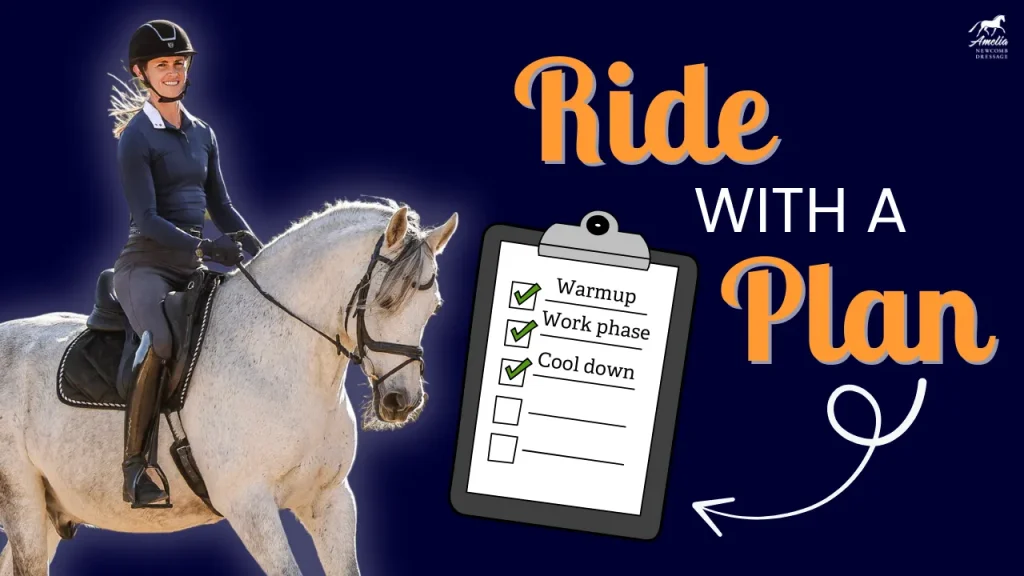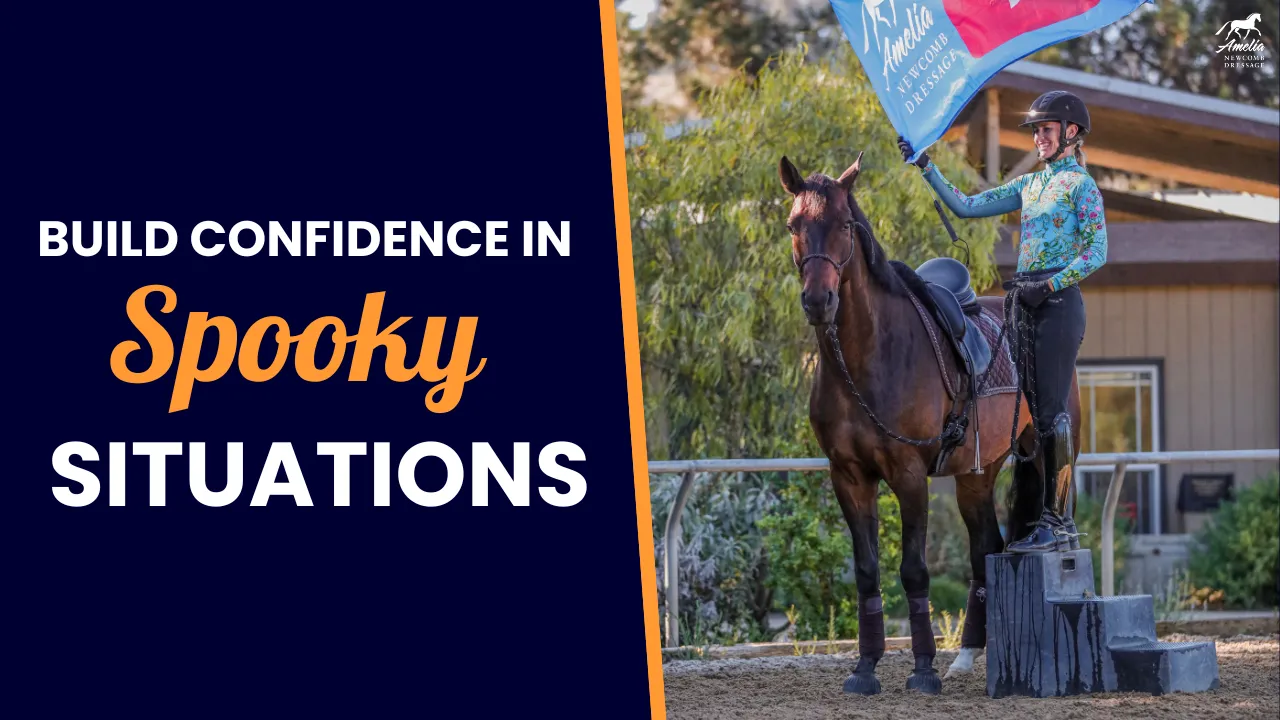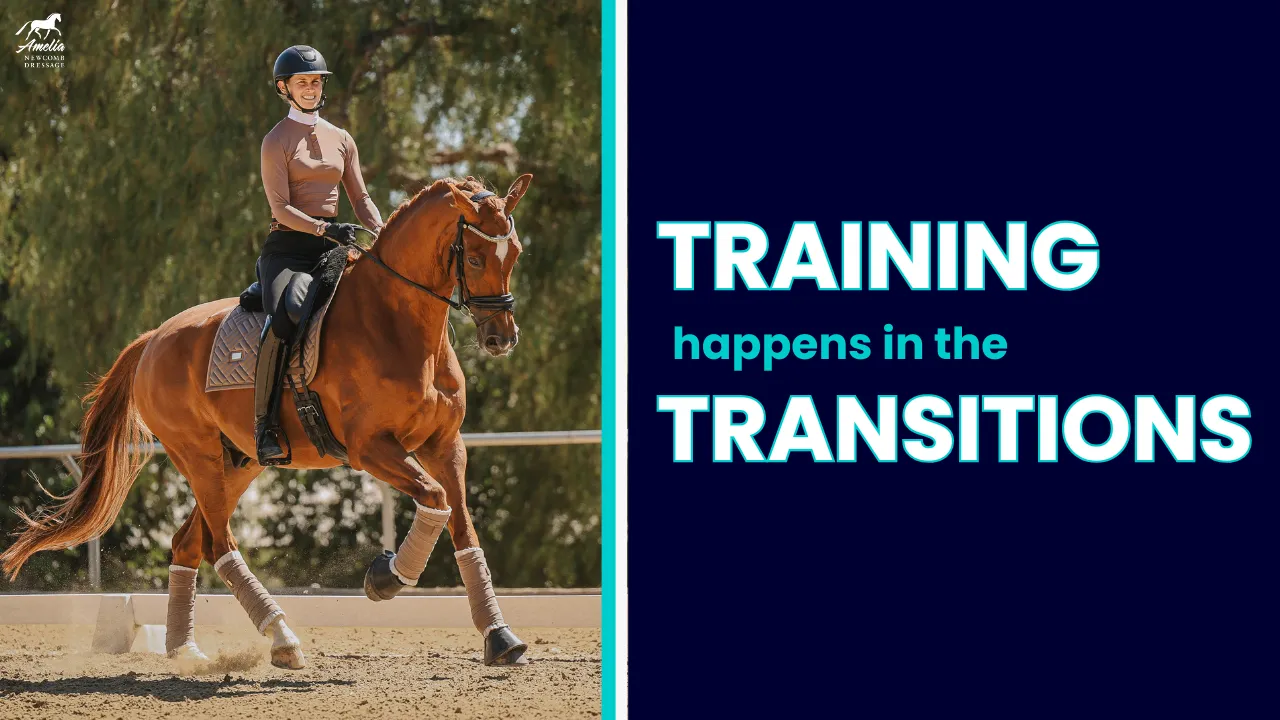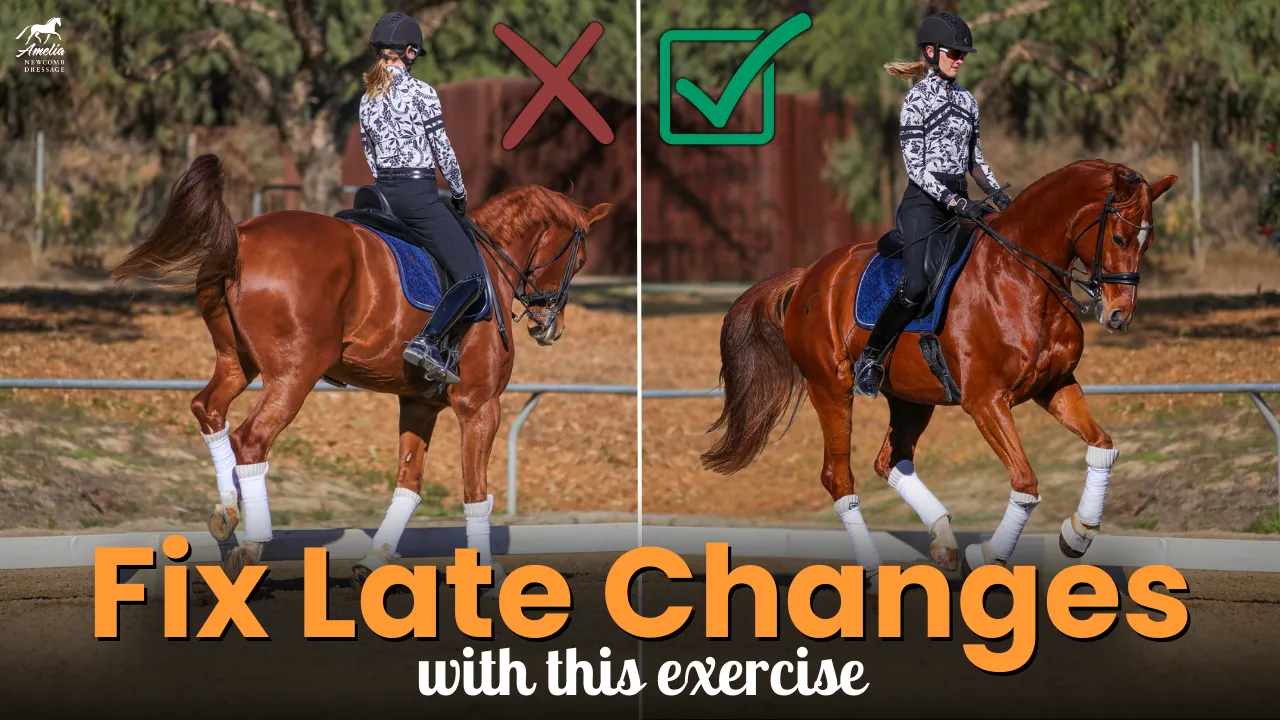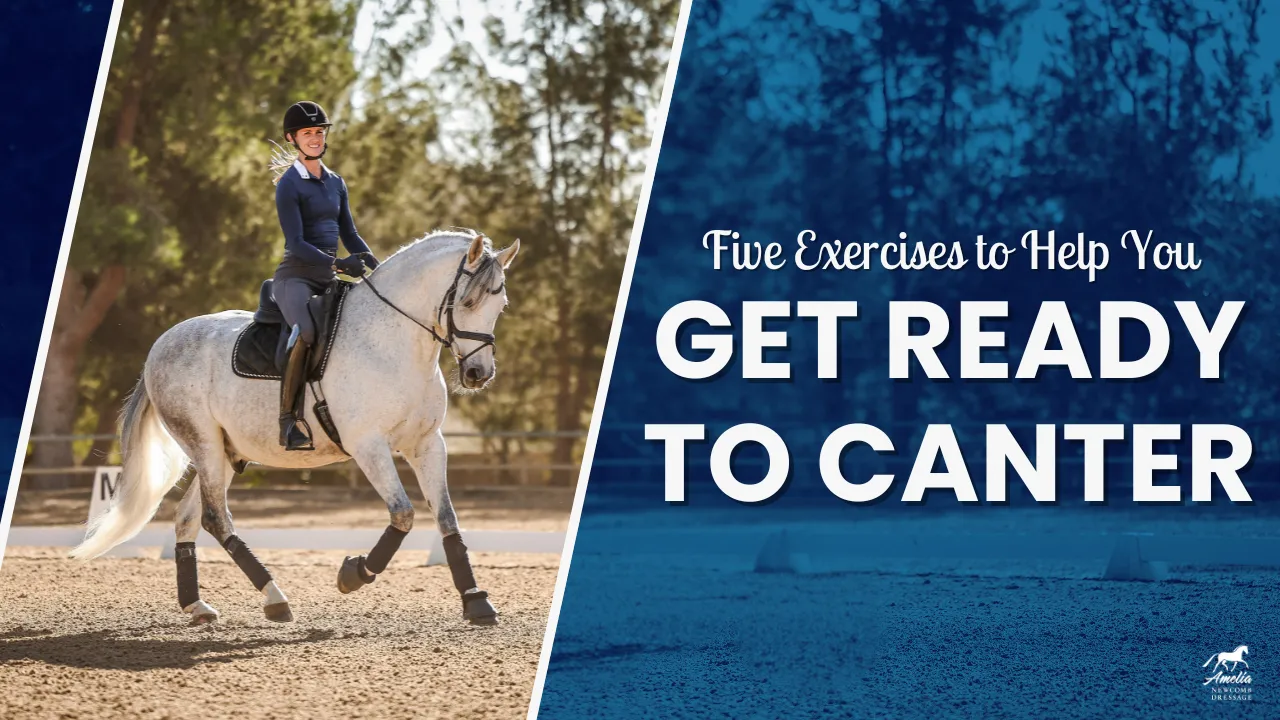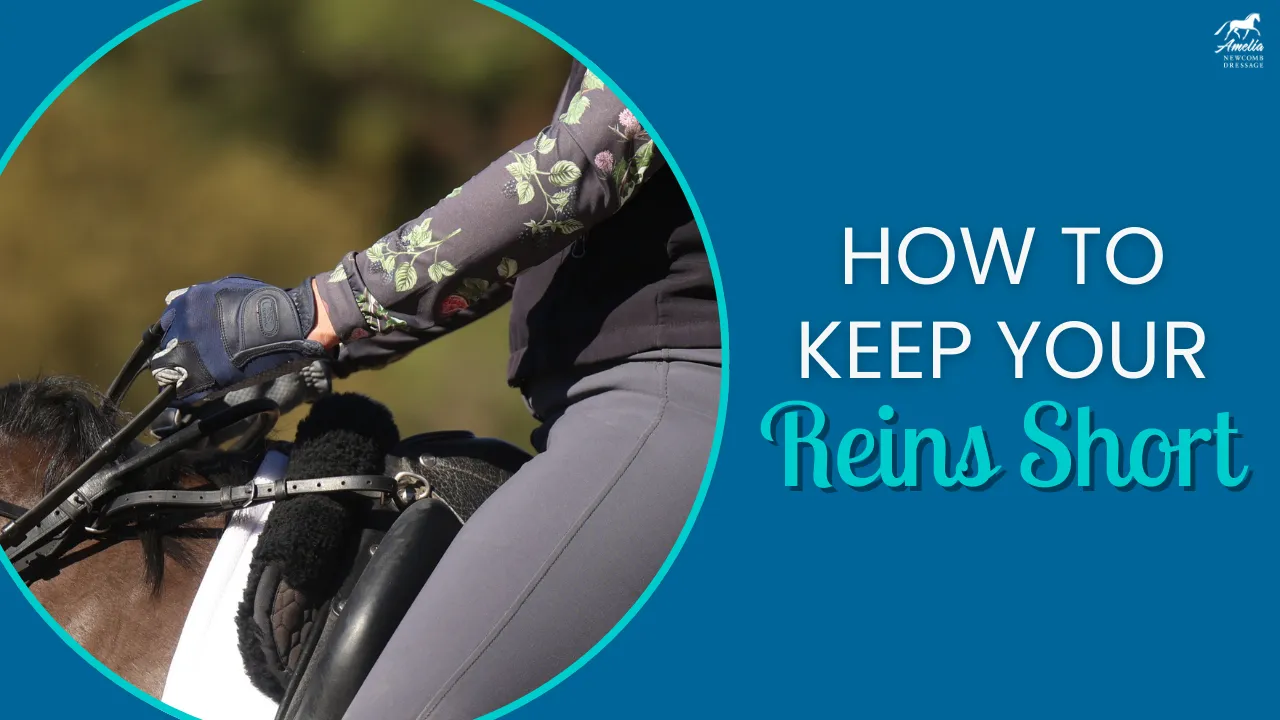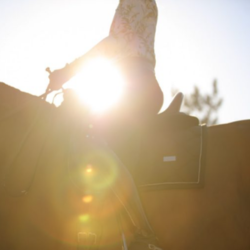What are the correct bending aids?
- Inside leg at the girth – to keep the horse from falling in.
- Outside leg behind the girth – to keep the haunches from drifting out.
- Outside rein – to guide the outside shoulder
- Inside rein indicates flexion
How much bend is enough?
The degree of bend in the horse depends on the size of the circle (or the steepness of the half pass). The smaller the circle, the more the horse must bend in the body. It is very important to note that the horse must bend evenly from the poll to the tail. Often riders over bend the neck of the horse and do not have enough bend in the body.
How to change from left bend to right bend?
- Bring right leg forward
- Push the horse off of the right leg until you feel them fill up the left rein
- Left leg slides back to keep the haunches from falling out to the right
- Right rein indicates the flection to to the right
- Then, once the horse is bending in the body to the right, the horse turns to the right.
Common mistakes:
- Rider pulls on the new inside rein without first moving the horse off of the new inside leg. This causes the horse to fall into the new direction. The horse will also loose their balance and speed up.
- Loss of tempo: often the horse will either speed up or slow down during the change of bend. It is important the the horse maintains the SAME tempo.
- Uneven serpentine loops: often, due to innate asymmetries in the horse, the horse will tend to fall in on one loop and fall out on the other loop. This causes asymmetric loops.
Having trouble?
A LOT has to happen in a short amount of time in order to correctly change the bend in the horse. Try making a transition to the walk and practice changing the bend at the walk. This will give you and the horse more time to correctly change the bend!!
Oh AND!!
Make sure also to change your posting diagonal each time that you change direction!!
Extra credit!!! Can you ride a serpentine with your horse stretching down?!


